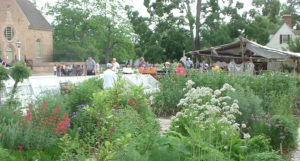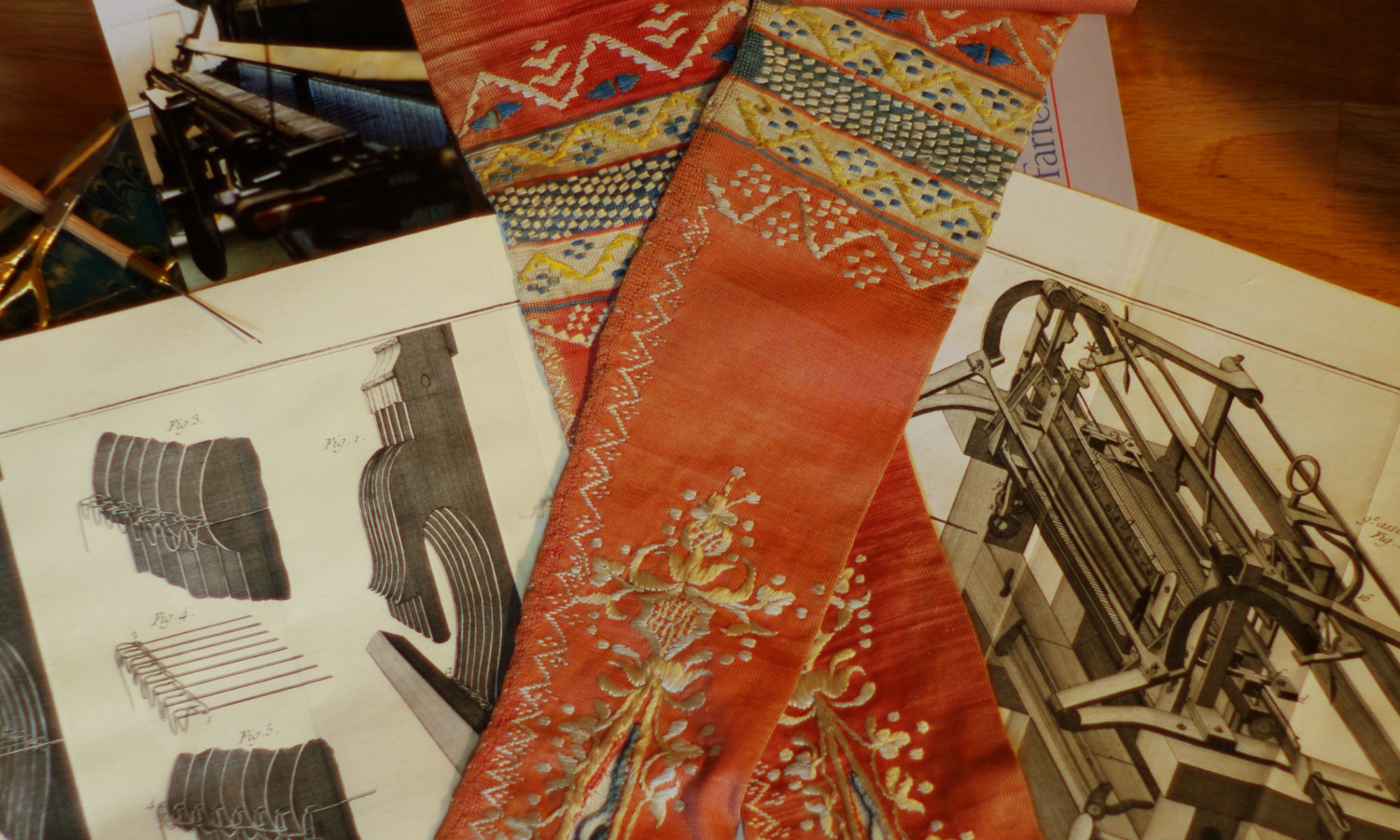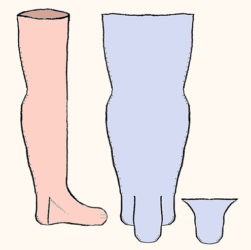
A few months back, someone described a situation at a reenactment event. She and her children approached a progressive group because the kids had some questions. They were ignored, which she assumed was due to snobbery. Many people agreed that the progressive group had an attitude of being too good for everyone else. I was the dissent with a different idea: sometimes the people with excellent material culture are introverts who are bad at talking to people.
In the past few years, as clothing standards are written, an approach has been used of Best, Acceptable, and Unacceptable. While there will be some discussion on the details, it’s believed that most people can be at the level of “acceptable” in their outfits with some effort.
What if we used Best, Acceptable, and Unacceptable as a framework for interactions with visitors and each other?
I think we can agree on the unacceptable behaviors, such as ignoring someone or putting them down. Reenactors all have their stupid visitor stories, which are best saved for retelling after hours.
Best are those who can can talk to a group and hold all their interest. There are brilliant first-person interpreters who can stay in character, speak in dialects, and handle “modern” questions without interrupting the illusion. Sadly, such skills can seem unattainable to others who will refuse to even try. Slightly Obsessed says to give it a try anyway.
This brings me to “Acceptable” and, like good historic clothing, will take some effort.
Greet the visitor. Often the “stupid” questions or comments are the visitor’s attempt to engage. Why leave it up to them to do that? If you were sitting on your porch at home and someone walked up, wouldn’t you say something? I was on a garden tour where, whenever another person or group approached, they were greeted and invited to join the tour. Don’t be so involved with one visitor (or another reenactor) that you completely ignore another.
Have a good opening line. As a visitor to events in the past year, I had some instances where I was greeted and the statement was “Do you have any questions.” I just walked in! Instead, consider the situation and why a stranger would approach. In Colonial Williamsburg the historic tradespeople can presume the visitor is a customer. “What will you buy?” asks Janea Whitacre at the millinery.
Is the visitor a refugee, or perhaps a farmer wishing to sell some food? Are they a traveler looking for an inn or directions? While you can indicate something they are wearing or carrying, pointing out that their modern clothes are strange will pull them out of the moment.
Something else to consider is an emotional start to a conversation. Are you frustrated that the thread is cheap and keeps breaking? Happy that the produce is fresh? Excited that a shipload of goods has just arrived? We know how thrilled we were when the Wells Fargo wagon was coming down the street.
As a visitor, I approached a small group of reenactors and asked what they were doing. “We’re just gossiping.” Awkward pause. No juicy tid-bits to share with me? Yes, I know they were probably chatting about non-18thC things and I caught them off guard. It’s possible to have something to say, though, even better if the gossip is about a person who does not exist.
Don’t block out the visitor. Some years back, I took a workshop with Mark Wallis of Past Pleasures, Ltd. He had us go through some exercises, and it was an eye-opener to see how many of us did exactly that. It’s a normal thing for people in a conversation to pull into a circle. Arranging the group in an arc makes it accessible to the visitor. Pausing to see a visitor’s reaction leaves room for their reactions or questions. Both a physical and intellectual space can be allowed.
Whatever your topic, your knowledge should be T-shaped. No one needs to have deep knowledge about everything. A shallow amount of information (the top of the T) will satisfy most visitors, But! They may have just heard the same thing at the last event or even have studied it themselves. I’ve done enough fiber work that a spinning demonstration is something I already know. Tell me how it fits into the person’s life, perhaps with wills or diary entries, as a deeper part of the topic.
Finally, I’ve been a reenactor and, more recently, a visitor. I’ll try to be a “stealth” visitor, but many people still know me. For reenactment groups, have you ever considered asking someone to do a critique of the interpretation? It’s something we could do for each other across time periods. Do you go to sites like Colonial Williamsburg and observe how the pros do it? I’ve often found them open to discussing their techniques.
© Carol Kocian and StockingFrameOfMind, 2018. Unauthorized use and/or duplication of this material without express and written permission from this site’s author is strictly prohibited. Excerpts and links may be used, provided that full and clear credit is given to Carol Kocian and StockingFrameOfMind with appropriate and specific direction to the original content.


This is an interesting approach. More organizations should encourage or work on this. In any case it’s always good to revisit to keep it fresh. After volunteering at Fort Ticonderoga I was asked to critically review their approach to interpretation. So some do ask for this type of feedback.
Interesting observation on the introversion of certain participants.
“Reenactors” by nature are introverts “Living Historians” extroverts. A broad brush I know, but a place to start. Particularly ‘Progressive” or Hardcore reenactors may have expended enough mental energy in getting themselves “inside” that the visitor is a jarring and painful distraction. Conversely the overly jovial living historian can destroy any pretense of immersion or sense of place and time. Neither of these are intentional or malicious of course.
Whenever possible our group has tried to provide a physical demarcation – beyond which it is ‘of the period’, but also an individual who both introduces that border, and is available, if necessary, to pull a participant into a period neutral situation (which could be as simple as a private quiet side conversation, or as complex as stepping outside ) to answer questions that can’t be answered in period terms.
This serves to prevent the frustration of visitors to get a straight answer to a question (been there!) while not disturbing the immersive atmosphere for either the rest of the visitors, or the participants.
I tend to use the terms interchangeably, myself, but I tend to think of reenactors more as replicating an actual event and living history as less scripted. Introverts and extroverts can exist in the same group. There are private events where there is no public interaction. A group can also designate presenters if there are members who are unable to communicate with visitors. For most, though, it can be prepared as well as any other part of the impression.
not all living historians are extroverts in my experience but i would be interested in how you define reenactor and living historian.
Mark Becht – great definition of the difference!
I love what you’re doing with this blog, and this entry is lovely. I’m a nerd and an introvert. Talking to strangers is hard for me, but geeking out is fun. So I try to bring something to do that will look interesting enough to bring people in, and that I can talk about easily. For me, being able to engage visitors requires at least as much planning and preparation as my putting together my outfit, and as with my outfit, I’m constantly trying to improve.
So thoughtful! Thank you.
Excellent tips. thanks.
Thanks for sharing this. Building a quality and educational experience for guests is such a key part of holding a living history event. I find interacting with guests to be the most enjoyable part of taking part in a living history events.
If guests get turned off and don’t come back then these wonderful sites won’t open their doors so generously to participants.
It’s nice to get advice on interacting with guests, looking forward to more.
Thanks for great postings. Not seen this stated as such but have felt that at the core of this is what the reenactors true interest is in doing reenactment – is it focused on teaching/interacting with the public, learning from other reenactors, socializing within just their own reenactment group, interacting with other groups, etc. Personally I’ve always been a bit miffed by reenactors who attend and participate in events put on by sites (who take on the organization, advertising, logistical support) but show little interest in interacting with the public who are attending the event – I’ve always considered it ‘part of the deal’ to help support the efforts the sites are making in having these events. Comments anyone?
Absolutely, Gina! I do understand that people are motivated by different things. There are different types of events, though, including immersion, and private parties and dances.
Thank you for this interesting and provocative post. As a reenactor/living historian of many years and a former museum staff member involved in interpretation, you have touched on a long-debated issue. The “Best/Acceptable/Unacceptable” framework, whether applied to the clothing/material culture or interaction, is a variation the rubrics framework that identifies objectives and “indicators” associated with each level of performance. The critical thing, in my mind, is that while one can work to achieve a certain threshold of “acceptable” performance (e.g., engagement with the public), everyone who joins the hobby (voluntarily) does so for different reasons, having their own unique skills, interests and backgrounds. The units, too, have their own character. Having done first-person (which I enjoy), I would argue against the presumption that it is “best” or most desirable. Bottom line: try to establish some basic expectations, equip people with knowledge and resources, and let those who are best at engaging the public (first- or third-person) do so. Everyone wins. Great post!